Do you know about the Itabashi Ward in Tokyo? It is one of the 23 wards of Tokyo, with various unique neighbourhoods and areas, along with different things to do and sights to see. If you are wondering what is Itabashi ward, the different areas inside Itabashi, the best things to do, history, accommodation and more, check out this ultimate Itabashi ward area guide.
What is Itabashi City Ward?

Itabashi Ward is located in the northwestern part of Tokyo’s 23 wards and borders Saitama Prefecture right next door, making it just barely a Tokyo town.
Take the Tobu Tojo Line from Ikebukuro or the Toei Mita Line from Sugamo, and you will reach Itabashi Ward, a town with a downtown flavour.
It is a town where the food culture of the common people is so deeply rooted that there are two major potato chip manufacturers in the ward: Yamaho Seika, which makes Wasabi Beef, headquartered in Tokiwadai, and Koikeya, which makes Karamucho (a Japanese snack food), headquartered in Narimasu.
The Tobu Tojo Line is the main means of transportation for the residents of the district. Although the clientele along the Tobu Toujo-Line is not all pachinko parlors and advertisements for “debt consolidation” give the area an aura of being a little astrange, it is actually a town where you can live comfortably.
Living in Itabashi City Ward
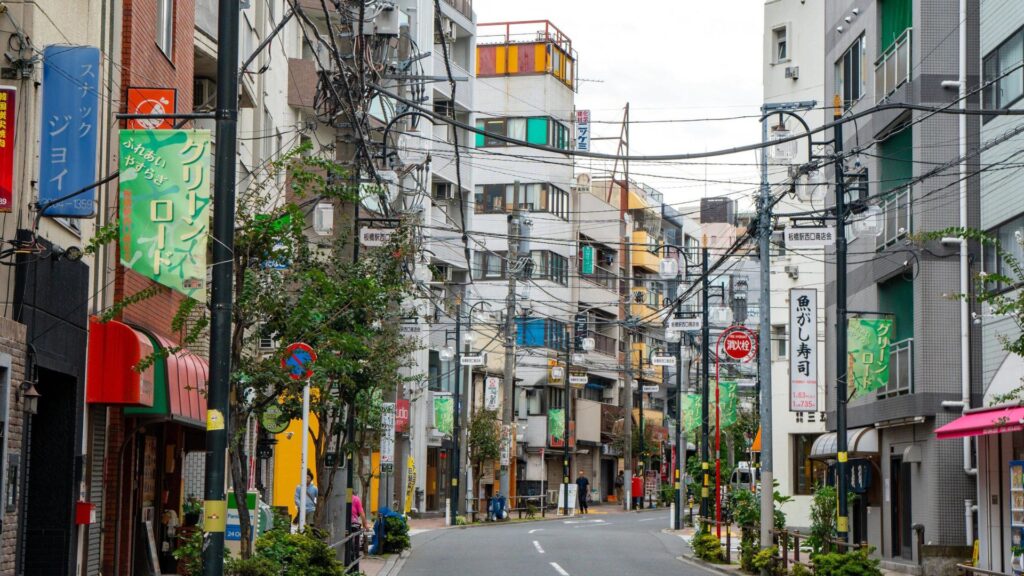
Itabashi Ward is located on the northwest side of Tokyo’s 23 wards, but culturally it is more appropriate to apply the term “north side” rather than “west side”. In other words, it is closer to Kita and Toshima wards, which are outside the “Yamanote” category.
The reason why the Tobu Tojo Line has so many accidents is probably more than just the fact that it is an above-ground section full of railroad crossings.
Residents of Itabashi Ward tend to do their business in Ikebukuro, which is not so different from Saitama residents, but the ward has two major shopping areas, Oyama and Narimasu. Both of them are treasure troves of izakaya and snack bars with a strong sense of community, and are hangouts for the elderly and landed gentry.
On the negative side, this area is also the scene of a number of violent incidents, such as the unsolved murder of an Itabashi couple and a four-person locked-room murder at a snack bar.
History of Itabashi City Ward
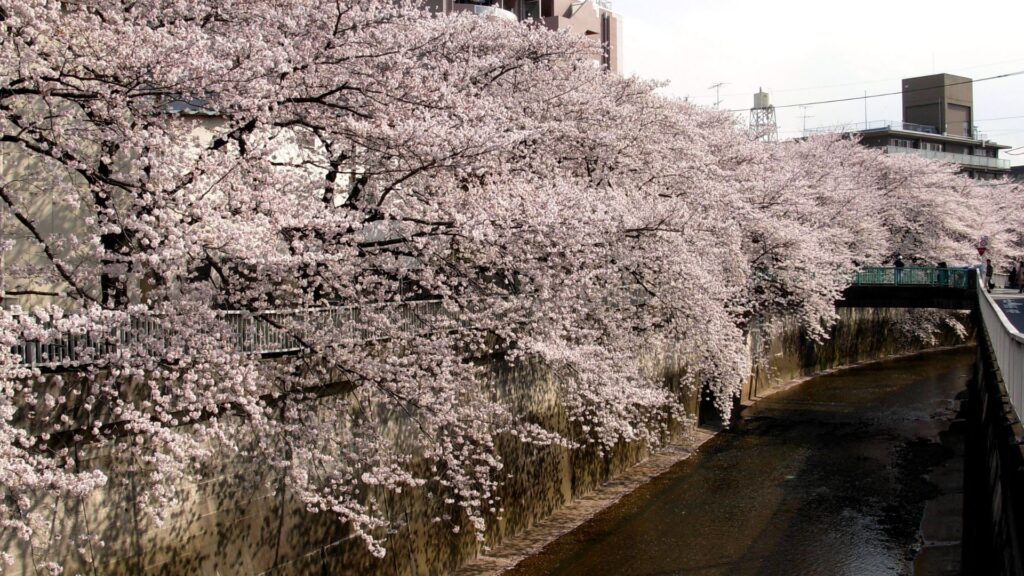
There is a theory that the name “Itabashi” comes from “Ita no Hashi,” a bridge over the Shakujii River in the ward from around 800 years ago.
The name “Itabashi” also appears in a military chronicle called “Enkei hon Heike Monogatari” written in the Kamakura period.
In the Edo period, when the shogunate established highways, the first post station of Nakasendo, one of the five highways, was located here.
As a side road, the Kawagoe Kaido also had a Kami-Itabashijuku, and the area prospered as a gateway to the large city of Edo (present-day Tokyo).
In the Meiji period, most of the Itabashi inns were destroyed by fire and the bustle of the old days ceased, but the opening of Itabashi Station on the Yamanote Line in 1885 and the Tojo Railway in 1914 led to the development of the Kami-Itabashi and Akatsuka areas.
In 1932, the Itabashi area was incorporated and Itabashi Ward was created.
Until the 1930s, the area was known as “Tokumaru Tambo” and was the breadbasket of Tokyo. In 1996, the construction of high-rise residential buildings began, transforming the area into one of Tokyo’s leading residential areas.
Areas of Itabashi City Ward
Tobu Tojo Line
(1) Narimasu 成増
The only station in Itabashi Ward on the Tobu Tojo Line. The south exit of the station has a shopping district called “Skip Village,” one of the busiest shopping areas in the ward, but the north exit is in a state of decline.
The number of foreign residents has been increasing in recent years. The headquarters of Potato Lake Ikeya is located on the border of Saitama Prefecture, bordering the Shirako River. The neighbouring city of Shirako in Saitama Prefecture is also within the Narimasu living area.
(2) Shimoakatsuka 下赤塚

Shimoakatsuka is a very inexpensive town where the main store of “Nodoya,” the pride of Itabashi Ward, is located. The Tokyo Big Buddha, a hidden Tokyo landmark, is a 20-minute walk from the station.
(3) Tobu Nerima 東武練馬
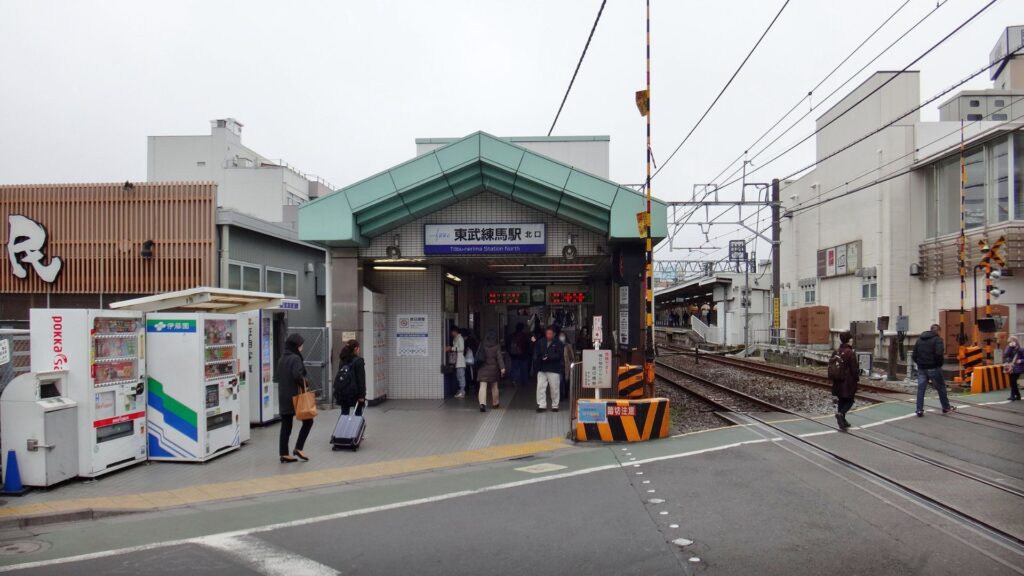
The station is located in Kitamachi, the northernmost part of Nerima Ward. Across the railroad crossing, the north side is Tokumaru, Itabashi Ward. The ion at the north exit is a hangout for local yankees.
(4) Kamiitabashi 上板橋

On the western edge of Tokiwandai, Itabashi Ward. If you walk along the shopping street in front of the station, you will find an unbroken line to the neighbouring Tobunerima Station. The residential density in Nakadai, a labyrinthine zone of valley topography, is quite spectacular.
(5) Tokiwadai ときわ台

The high-end residential area known as “Itabashi’s Denenchofu” is located on the north side of the station. The semi-circular streets and cul-de-sacs remain. However, once you leave the area, you will find the typical downtown scenery of Itabashi Ward. The headquarters of Yamaho Confectionery, a potato chip maker, is also located here.
(6) Naka-Itabashi 中板橋
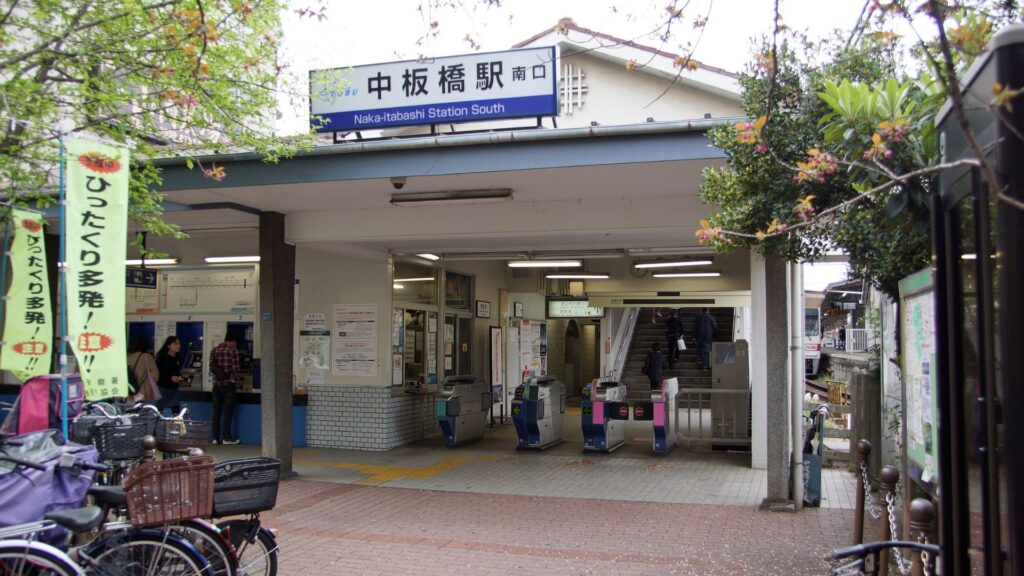
A town where netizens can think of nothing else to do except visit the Twitter-famous Nepalese restaurant “Daisuki Nihon” in the shopping arcade at the station’s north exit.
(7) Oyama 大山

Itabashi residents are proud of their arcade street, Happy Road Oyama. It has a miscellaneous and folksy flair, just like a shopping street in Osaka. The slum in the valley behind Nichidai Hospital in Oyaguchi Kamimachi has also been improved. There is also a Korean school near there.
JR Saikyo Line
(8) Itabashi 板橋
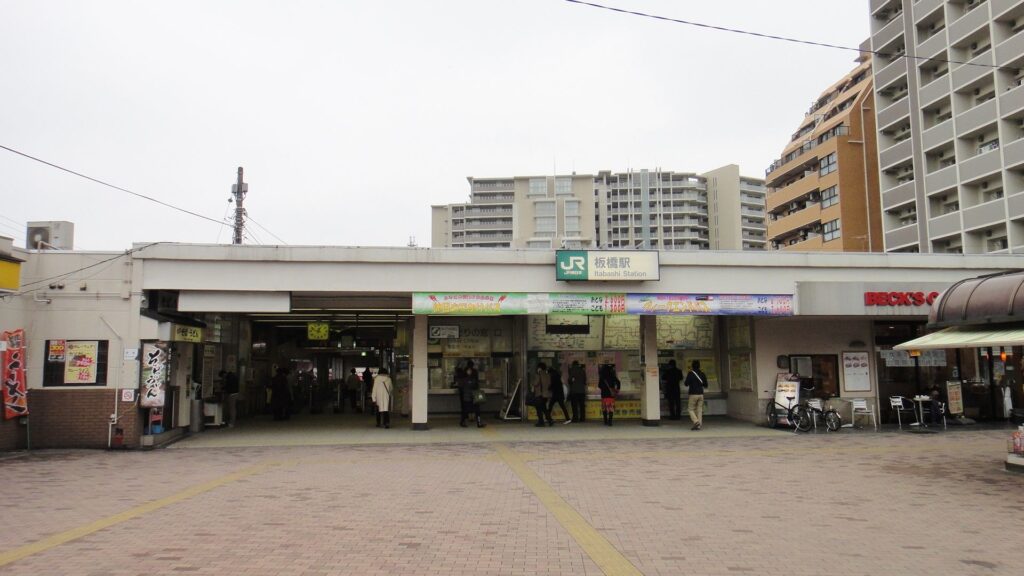
Along with its neighbour Jujo, this station is the narrowest section of the Saikyo Line, with a bottleneck feeling. Only the northwest side of the station is in Itabashi Ward, while the rest of the station is bordered by Toshima Ward and Kita Ward. At the east exit, there is a postwar barracks alley and the cemetery of Isamu Kondo, a member of the Shinsengumi.
(9) Ukima Funawatari 浮間舟渡

The northernmost station on the Saikyo Line. Ukima Park in front of the station is in Ukima, Kita-ku, but Funawatari, Itabashi-ku is adjacent to the roundabout in front of the station. Toda Funawatari 4-chome is home to Toda Funeral Home, which used to be located on the north side of the Arakawa River and belonged to Saitama.
Toei Mita Line
Shin-Itabashi 新板橋
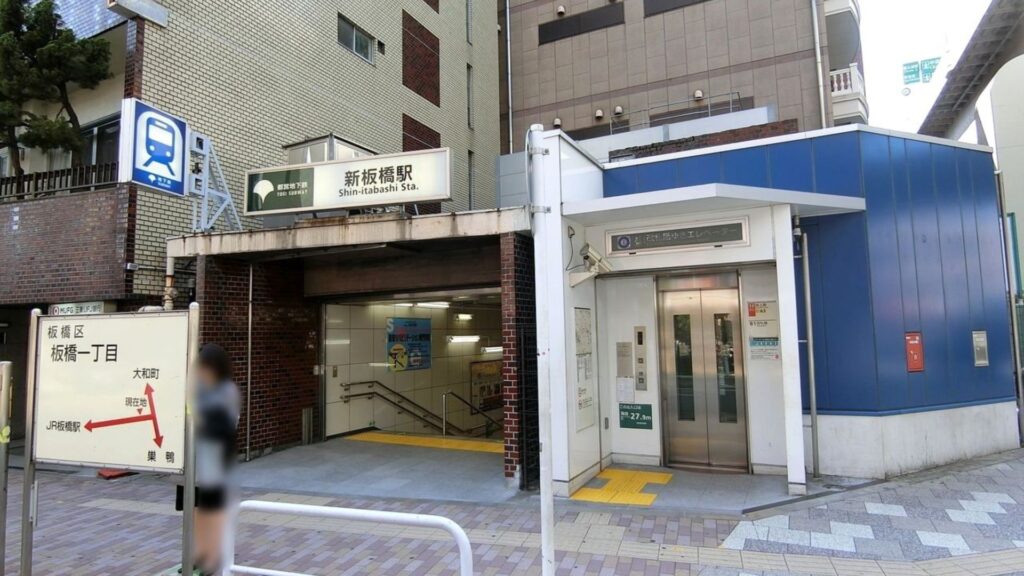
Shin-Itabashi is in close proximity to Itabashi Station on the Saikyo Line. If Toei Mita Line users want to go to Ikebukuro, transferring here appears to be a shortcut, but the Saikyo Line is so delicate that it is of little value.
(10) Itabashi Kuyakushomae 板橋区役所前

As the name of the station suggests, this is directly in front of the ward office, but it is also the closest to the Nakajuku shopping street, which is connected to the old Itabashi Inn. If you continue on through the downtown area, which also has a historical atmosphere, you will find the Itabashi Bridge, from which the ward’s name comes, over the Shakujii River.
(11) Itabashi-honmachi 板橋本町

The “Itabashi” bridge across the Shakujii River from the Nakajuku shopping street, which is a part of the old Itabashi-juku district. Enkiri Enoki, a well-known landmark with a long history, hints at the local connection.
Honhasunuma 本蓮沼
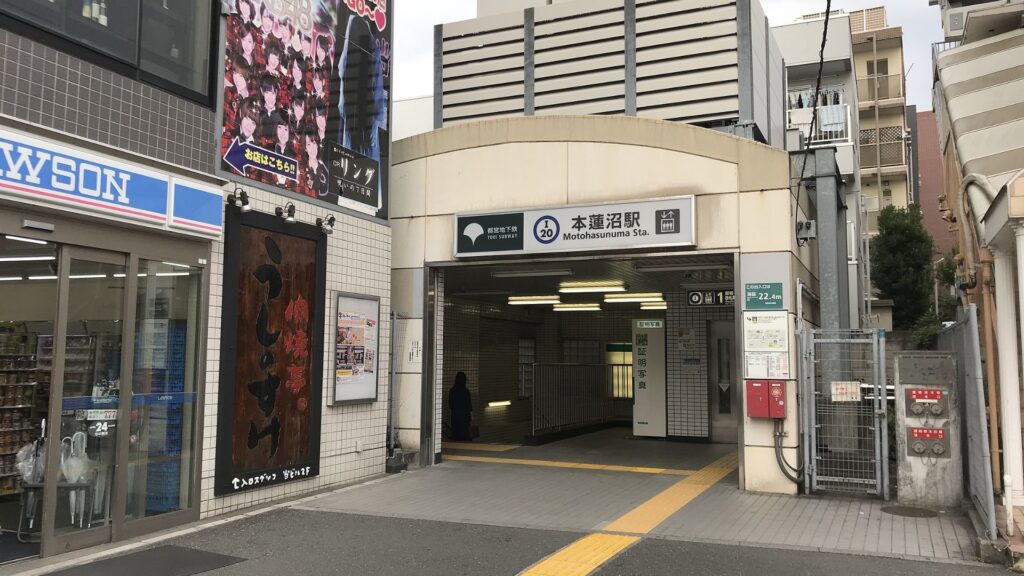
The name of this area may seem unrecognizable, but it is one of the most famous places in Tokyo. The Kirigaoka Danchi, one of the most mammoth housing complexes in Tokyo, and Akabane Sports-no-mori Park are within walking distance.
Shimura-sakaue 志村坂上

You can find the Shimura Ginza shopping street here. It stretches from the station. Maenohara Onsen Sayano Yudokoro, a spa bathhouse in Maenomachi, is popular among foreign tourists.
Shimura 3-chome 志村三丁目

From here on, the station is above ground. The contrast between the metropolitan housing in front of the station and the condominiums on the hill is amazing. Seven Town Azusawa, a mall that Itabashi Ward residents are proud of, is also located here.
(12) Hasune 蓮根

From here onward is a low marsh area along the Arakawa River. The name of this area was not derived from the fact that lotus root was harvested in the low marshy area in the past. The name is a compound of Kami-Hasunuma Village and Neha Village. There are many Toei housing complexes, and Johoku Kotsu Park with an SL locomotive is located here.
(13) Nishidai 西台

The Toei Nishidai Apartments, an apartment complex in front of the station that was combined with the garage of the Toei Mita Line, is the highlight of the area. It is truly Itabashi’s Battleship Island. Despite the station name, Nishidai, Itabashi Ward is quite far from Nishidai Station. Daito Bunka University, one of the few universities in Itabashi Ward, is also located here.
(14) Takashimadaira/Shin-Takashimadaira 高島平・新高島平
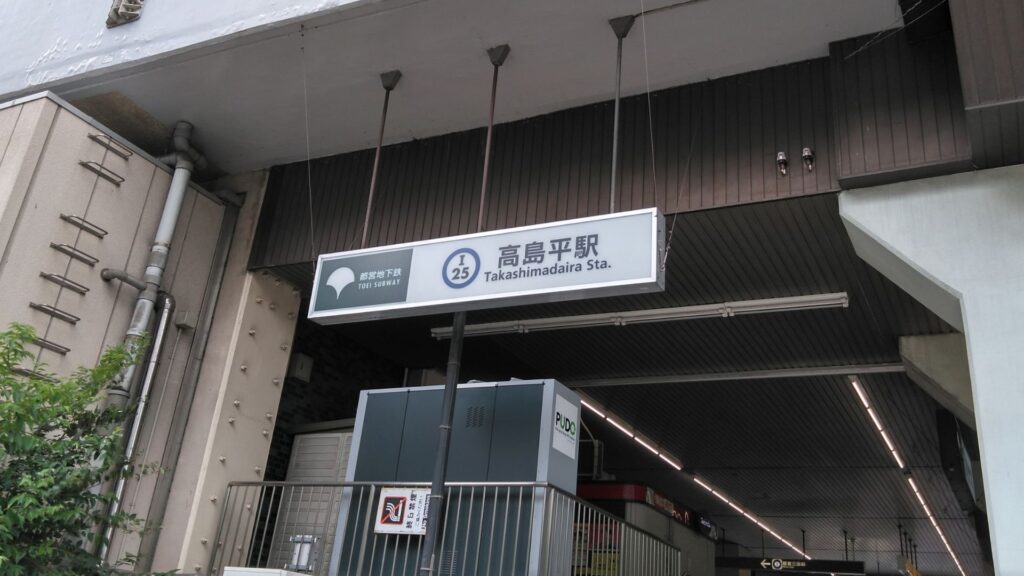
This town is home to Takashimadaira Danchi, one of the largest high-rise apartment complexes in Japan, built on a vast area of farmland that originated in Tokumarugahara, the domain of the Edo shogunate. The estates were once known as suicide spots, but now they are deteriorating and the residents are aging rapidly.
(15) Nishi Takashimadaira 西高島平

The terminal station of the Toei Mita Line, which is not at its farthest end. The station was originally intended to be connected to the Tojo Line, but it is now at a standstill. The shopping area under the elevated railway tracks is sadly deserted. The Sasame Bridge over the Arakawa River is right in front of the station, and the border with Saitama Prefecture looms in front of the station. Wako City and Toda City are also close by.
What to do in Itabashi?
Akatsuka Park 東京都立赤塚公園 https://goo.gl/maps/HZ41PshCSSRBAQFR9
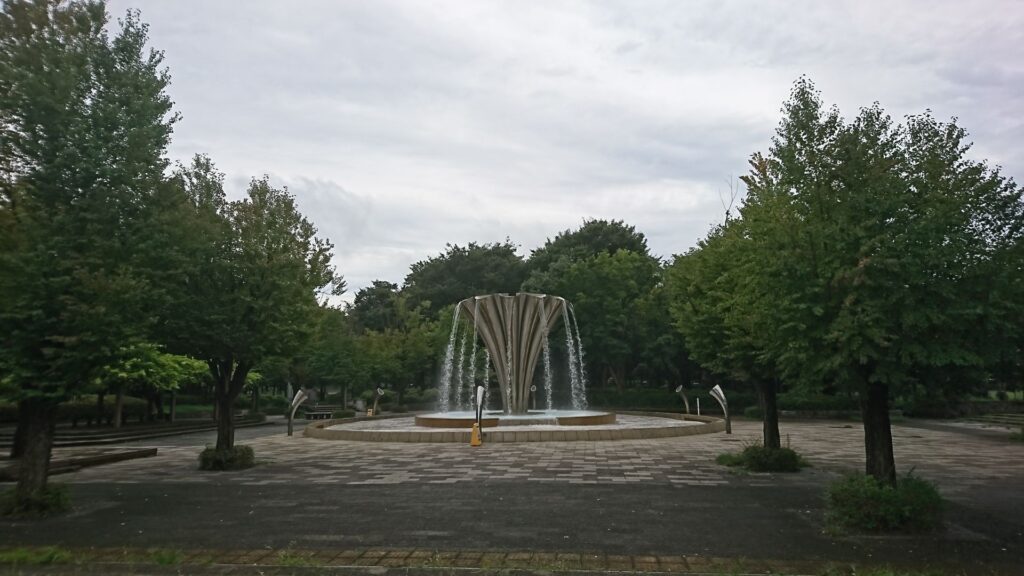
A metropolitan park opened in 1974, Akatsuka Park is a 10-minute walk from Takashimadaira Station on the Toei Mita Line. The park stretches east to west along the Takashimadaira Danchi and Metropolitan Expressway Route 5. The highlight of the park is the large fountain in the central area. Water cascades down from the fountain object installed in the center of the Jabu-Jabu Pond. During the summer months, this is a popular recreation spot for children, many of whom wear swimsuits and bring water guns, sprayers, and other playground equipment. There is also a natural forest so rich in nature that you may forget that there is a highway running nearby.
Maenohara Onsen Sayano Yudokoro 前野原温泉 さやの湯処https://goo.gl/maps/ZMsp7wQLFzp39A7u8

A day-trip hot spring facility where you can enjoy genuine natural hot spring water from the source while still being in the city. The building is an old private house built in 1946 that has been restored and used to create a nostalgic and relaxing atmosphere. The facility has 14 types of baths, including a greenish-brown source bath, an open-air bath surrounded by greenery, an indoor bath with a highly concentrated carbonic acid spring, and two saunas. The restaurant is also popular for its soba noodles and set menus while enjoying a view of the karesansui (dry landscape garden), a reproduction of a garden from the Showa period. The nearest station is Shimura-sakaue Station.
Akatsuka Tameike Park 板橋区立赤塚溜池公園 https://goo.gl/maps/pEGAB9Mxpxt8WT629
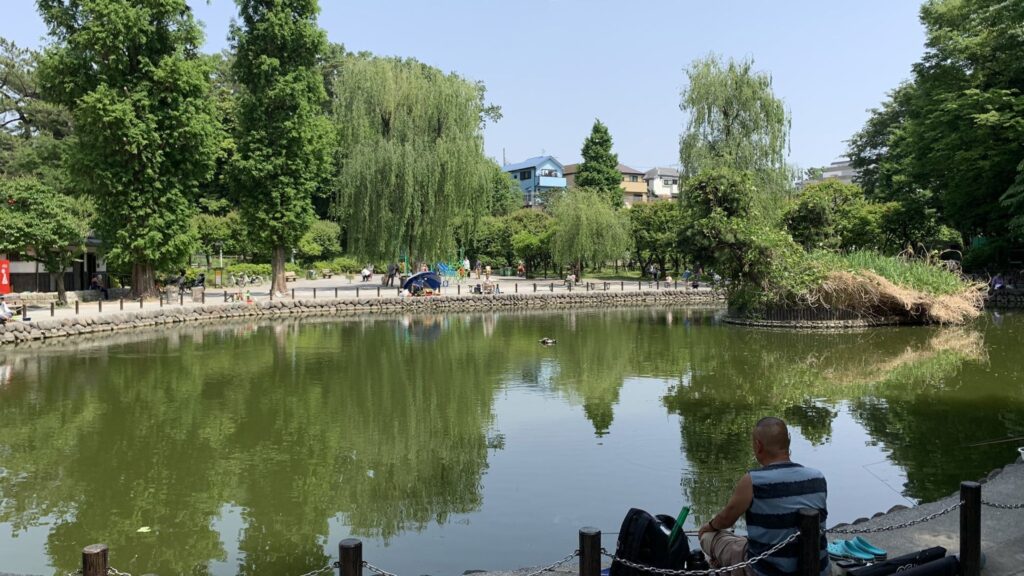
Akatsuka Tameike Park is one of the “Ten Scenic Views of Itabashi,” selected as one of the best views unique to Itabashi. The park is known for its plum blossoms, with approximately 200 plum trees, some 40 years old, planted in the park. The sight of all the blossoms blooming at once in early spring is breathtaking. The annual Ume Festival is held in early March, featuring musical performances and an Oedo dance performance, and there are too many events to enjoy in a single day. The area is a 20-minute walk from Nishi-Takashimadaira Station on the Toei Mita Line, and is surrounded by the Akatsuka Castle Ruins Park, as well as the ward’s local museum and art museum.
Spadio 板橋天然温泉 スパディオ https://goo.gl/maps/kuKGpa2UDWe9hUpU9

This one-day bathing facility boasts natural hot spring water pumped up from 1,500 m underground. The light brown water is called “fossil water” because it is ancient seawater from 2 million to 130,000 years ago. It is characterized by the high salt content and organic matter in the sodium chloride high salt onsen. It is said to be effective for neuralgia, chronic digestive diseases, chronic women’s diseases, and recovery from illness. An 8-minute walk from Itabashihoncho Station on the Toei Mita Line. A free shuttle bus service is also available from Nishidai Station on the Mita Line and Tokiwadai Station on the Tobu Tojo Line.
Itabashi Botanical Garden 板橋区立熱帯環境植物館 https://goo.gl/maps/YhLypZvxBtZHnNU9A

Approximately 700 species and 2,000 plants are exhibited in four zones in the greenhouse and cool room: “Intertidal zone vegetation,” “Tropical lowland forest,” “Community landscape,” and “Cloud forest. Together with the aquarium, the museum reproduces the environment of Southeast Asia in three dimensions, allowing visitors to experience real nature.
Shakujii River 石神井川 https://goo.gl/maps/kWwvDf57NmU2Auo97

The Shakujii River runs along both banks of the Shakujii River on the north side of Naka Itabashi Station. Particularly beautiful is the 2-km course from Naka-Itabashi to Kaga. A cherry blossom festival is held in spring.
Events in Itabashi City Ward

- Itabashi Fireworks Festival いたばし花火大会
Hotels in Itabashi City Ward
FLEXSTAY INN Tokiwadai (2*)
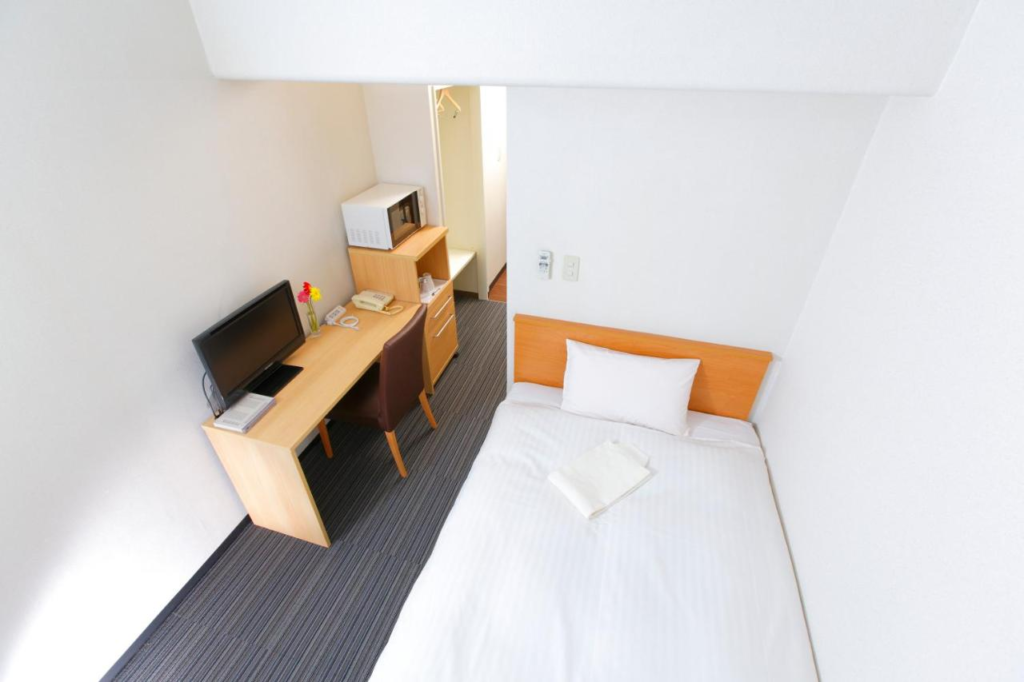
Conveniently located a 5-minute walk from Tokiwadai Train Station on the Tobu Tojo Line, Flexstay Inn Tokiwadai offers self-catering accommodation. The property is a 10-minute train ride from lively Ikebukuro area. Popular Shinjuku or Shibuya areas can be reached within a 25-minute train ride.
Tokyo Guest House Itabashi-juku (1*)
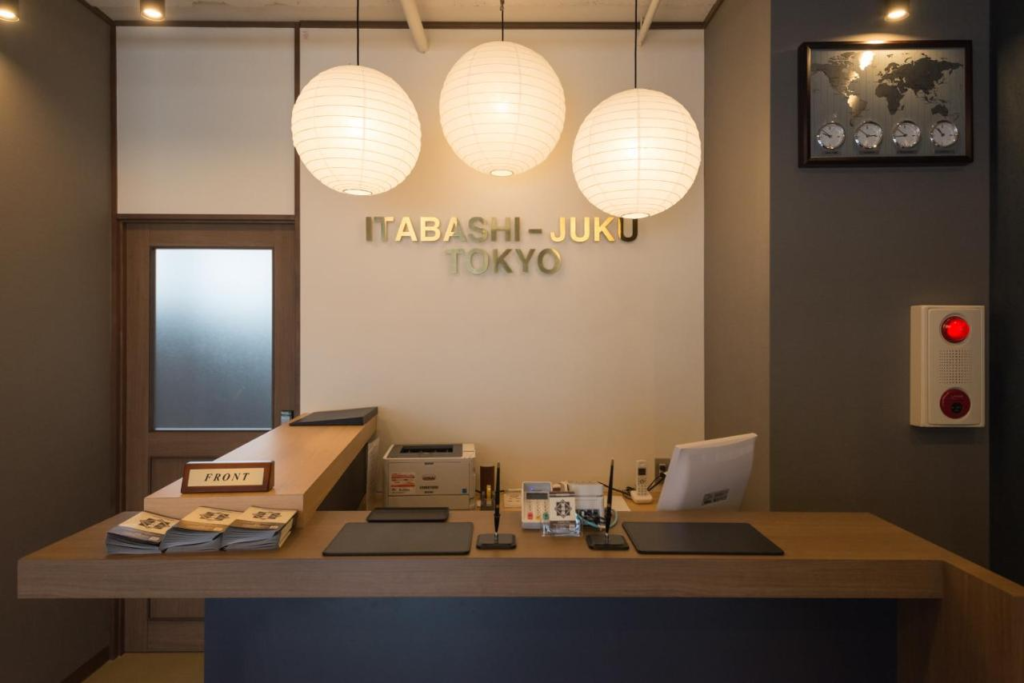
Situated conveniently in the Itabashi Ward district of Tokyo, Tokyo Guest House Itabashi-juku is set less than 1 km from Happy Road Ohyama Shopping Street, a 13-minute walk from Tokiwadai Tenso Shrine and 1.3 km from Dagashiya Game Museum. Attractions in the area include Hikawa Shrine, 2 km away, or Jizo of Air Raid Victims, located 2.2 km from the property. Japan Calligraphy Museum is 1.3 km from Tokyo Guest House, while Enkiri Enoki Site is 1.5 km away.
Nestle Tokyo Duplex Itabashi 02 (1*)
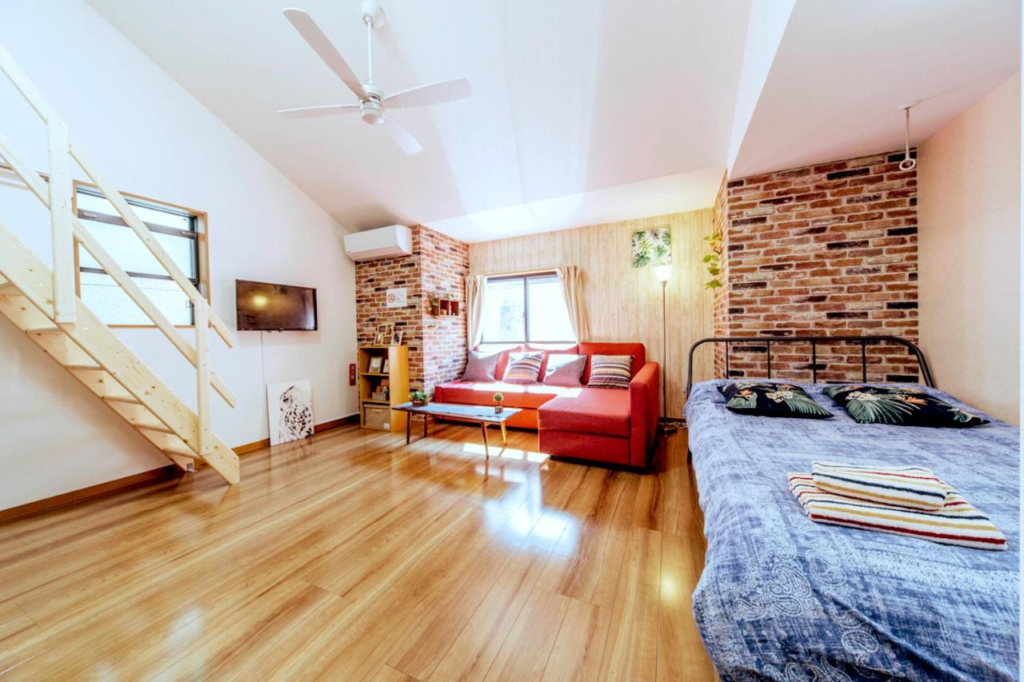
Located in Tokyo, less than 1 km from Happy Road Ohyama Shopping Street and a 13-minute walk from Tokiwadai Tenso Shrine, Nestle Tokyo Duplex Itabashi 02 offers free WiFi and air conditioning. This apartment is 1.6 km from Enkiri Enoki Site and 2.2 km from Itabashi Science & Education Museum. Popular points of interest near the apartment include Japan Calligraphy Museum, Dagashiya Game Museum and Hikawa Shrine.
—
What do you think about Itabashi Ward in Tokyo? Do you like finding out about the history and culture of this interesting area of Tokyo? There is so much history and unique things to do in this local neighbourhood of Tokyo, if you’re interested in coming for yourself, make sure to refer back to this blog.

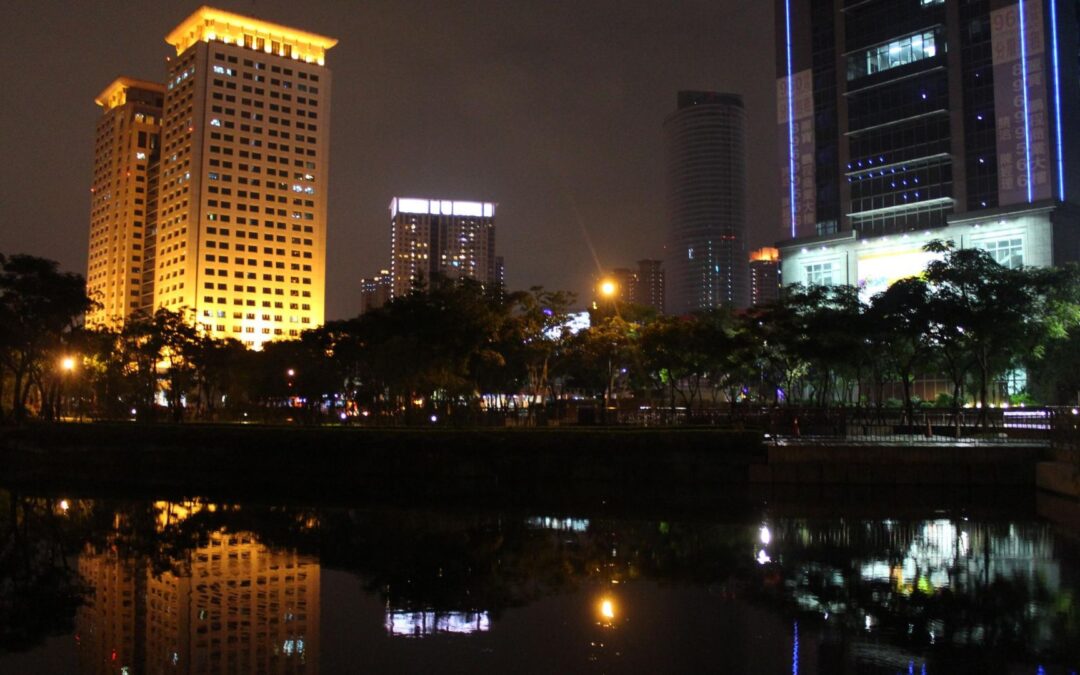
Recent Comments